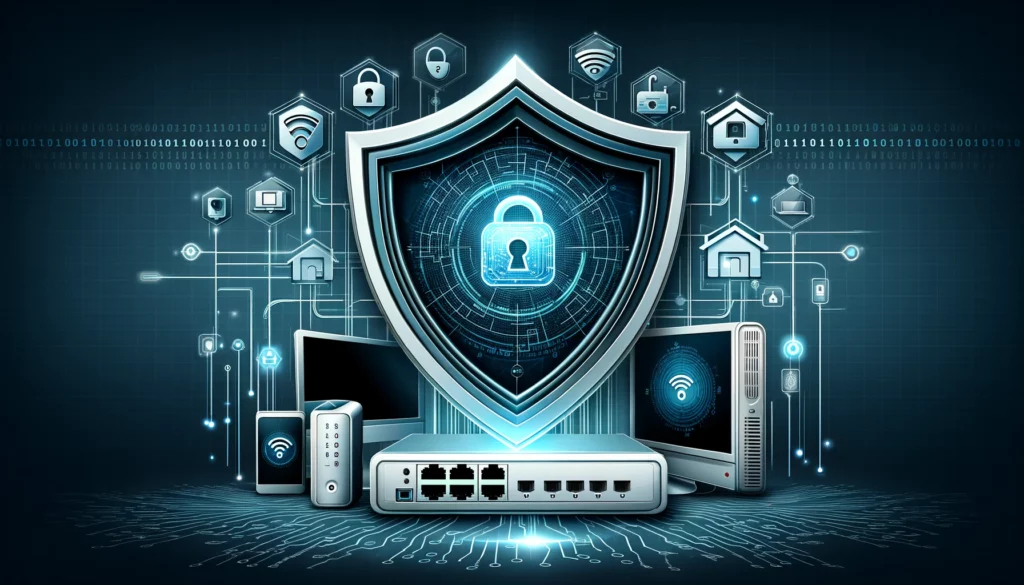
We live in an era where our lives are increasingly digitized. It’s not just our computers or our phones anymore, either. We’ve got smart homes, smart heaters, even smart toothbrushes — and this means the security of our home networks is more important than ever.
Even if your home network doesn’t host too much sensitive information, our networks host a variety of data that, if compromised, could be a big problem. As cyber threats continue to evolve and become more sophisticated, it’s never been more important to take proactive steps to secure your home network. But how do you do that without breaking the bank — or needing a degree?
Understanding Your Home Network
Before diving into security measures, we need to talk about what constitutes your home network. Typically, this includes your Wi-Fi router, computers, smartphones, tablets, and any smart devices like thermostats, cameras, or voice assistants. Knowing the devices connected to your network is the first step in securing it. This knowledge helps in identifying potential vulnerabilities and taking appropriate actions to mitigate risks.
Does your security camera have a username and password? It’s a potential liability. Does your speaker connect to Wi-Fi? Well, you get the drill. If you want to play chess, you first need to know what the pieces are and how they move — only then can you protect them. It’s the same with network security.
Basic Security Measures
The simple methods laid here are sufficient to protect you from the vast majority of threats you’re likely to encounter.
Strong Passwords
The foundation of network security starts with strong, unique passwords. Avoid common passwords and consider using a password manager to generate and store complex passwords. If you want another layer of security, try using double opt-in.
Changing Default Usernames and Passwords
Manufacturers often set default usernames and passwords for devices, which can be easily found online by attackers. Changing these to unique credentials significantly reduces this risk.
Regularly Updating Firmware
Manufacturers release firmware updates to address security vulnerabilities. Oftentimes, this happens precisely because a security breach was uncovered. Ensuring your devices are up-to-date is a simple yet effective way to enhance security.
Advanced Security Strategies
If you want to go just a step forward, here are some things you can do. These are not expert-level things and they should still be very easy to accomplish, but just take one extra step.
Network Segmentation
Separating your network into segments can limit an attacker’s access if they manage to breach your network. For example, keeping smart devices on a separate network from your computers and smartphones can contain potential threats.
VPN for Secure Remote Access
A Virtual Private Network (VPN) encrypts your internet connection, protecting your data from eavesdroppers, especially when accessing your network remotely.
Use of Firewalls
Firewalls act as a barrier between your network and the internet, monitoring incoming and outgoing traffic to block suspicious activity. Many routers come with built-in firewalls, but additional software-based firewalls on your devices can provide an extra layer of security.
Regular security scans
External Attack Surface Management (EASM) is a security practice that involves identifying and managing the vulnerabilities accessible from the internet in your home network. While traditionally used by businesses, the principles of EASM can be applied to home networks. By regularly scanning for exposed services, open ports, and unknown devices connected to your network, you can significantly reduce your network’s exposure to external threats.
Practical Tips for Network Monitoring and Maintenance
Regularly Checking for Unauthorized Devices
Keeping an eye on the devices connected to your network is crucial. Unauthorized devices can be a sign of a security breach. Most routers offer a way to view connected devices, allowing you to spot and remove any intruders.
Setting Up Alerts for Suspicious Activity
Many security tools and routers can be configured to alert you to suspicious activity, such as unknown devices connecting to your network or unusual data flows. These alerts can be invaluable in catching breaches early.
Educating Household Members
Cybersecurity is a team effort. I know — most people are not keen on security, especially when they’re members of family. But it’s never a bad idea to get people to at least talk about it. Just like doing the dishes and keeping the house clean is a team effort, so too is keeping the network safe.
Educating everyone in your household about the importance of cybersecurity, safe browsing practices, and how to recognize phishing attempts can significantly strengthen your network’s security. Regular discussions about cybersecurity can help keep everyone up-to-date on the latest threats and safe practices.
Conclusion
Securing your home network might seem daunting, but by taking it step by step, it’s entirely achievable. From basic practices like using strong passwords and updating firmware to more advanced strategies like network segmentation and applying principles of External Attack Surface Management, there are numerous ways to enhance your network’s security.
Remember, the goal is not just to protect your data but also to create a safe digital environment for your household. Implementing these practical tips will go a long way in keeping your home network safe from the ever-evolving landscape of cyber threats.






